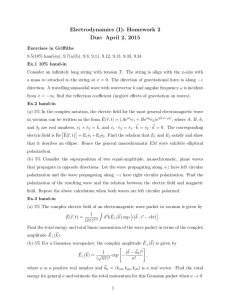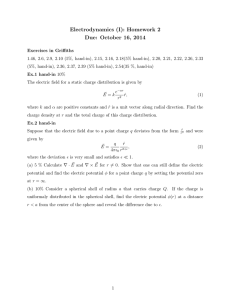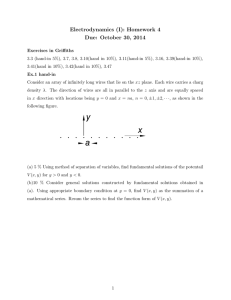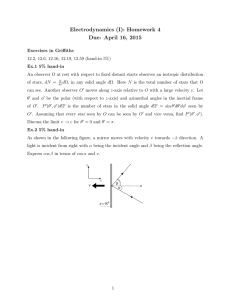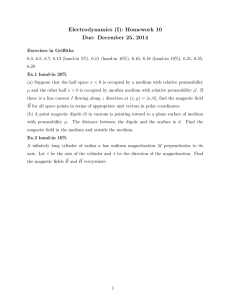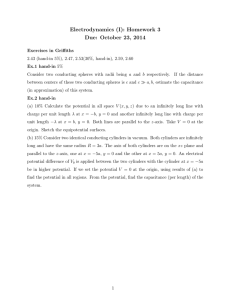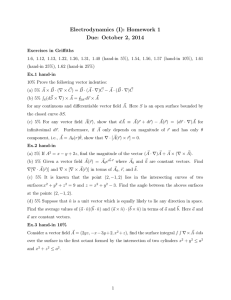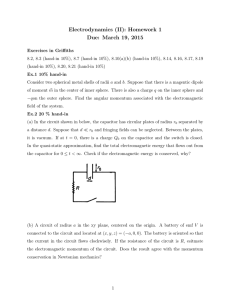Electrodynamics (I): Homework 3 Due: April 9, 2015
advertisement
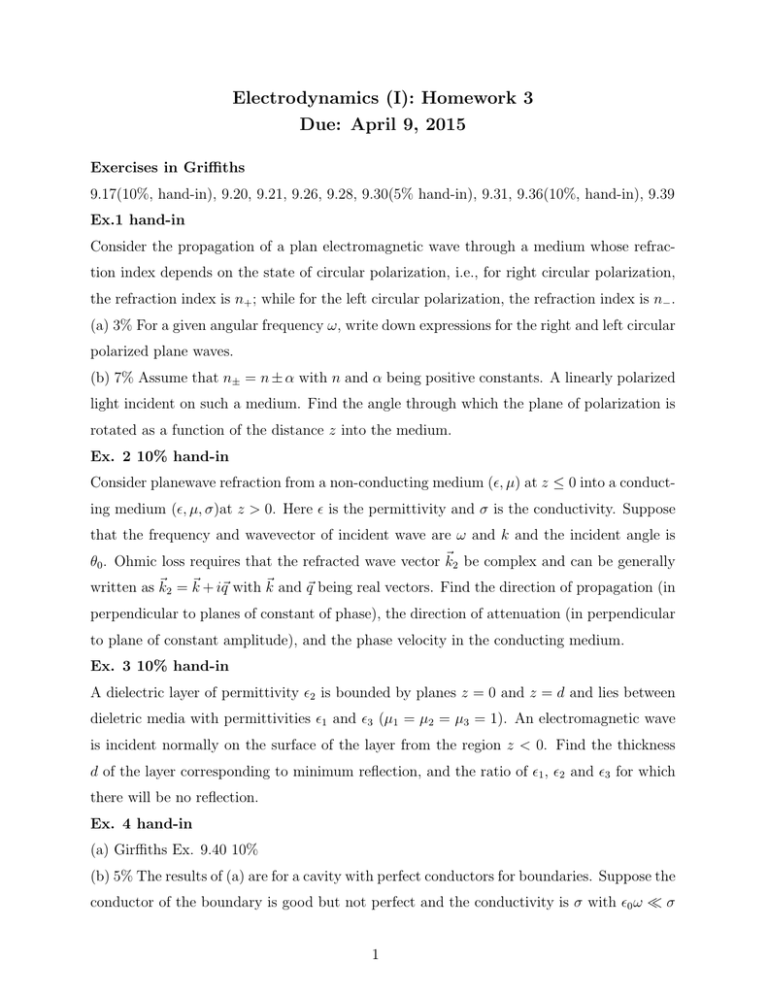
Electrodynamics (I): Homework 3 Due: April 9, 2015 Exercises in Griffiths 9.17(10%, hand-in), 9.20, 9.21, 9.26, 9.28, 9.30(5% hand-in), 9.31, 9.36(10%, hand-in), 9.39 Ex.1 hand-in Consider the propagation of a plan electromagnetic wave through a medium whose refraction index depends on the state of circular polarization, i.e., for right circular polarization, the refraction index is n+ ; while for the left circular polarization, the refraction index is n− . (a) 3% For a given angular frequency ω, write down expressions for the right and left circular polarized plane waves. (b) 7% Assume that n± = n ± α with n and α being positive constants. A linearly polarized light incident on such a medium. Find the angle through which the plane of polarization is rotated as a function of the distance z into the medium. Ex. 2 10% hand-in Consider planewave refraction from a non-conducting medium (, µ) at z ≤ 0 into a conducting medium (, µ, σ)at z > 0. Here is the permittivity and σ is the conductivity. Suppose that the frequency and wavevector of incident wave are ω and k and the incident angle is θ0 . Ohmic loss requires that the refracted wave vector ~k2 be complex and can be generally written as ~k2 = ~k + i~q with ~k and ~q being real vectors. Find the direction of propagation (in perpendicular to planes of constant of phase), the direction of attenuation (in perpendicular to plane of constant amplitude), and the phase velocity in the conducting medium. Ex. 3 10% hand-in A dielectric layer of permittivity 2 is bounded by planes z = 0 and z = d and lies between dieletric media with permittivities 1 and 3 (µ1 = µ2 = µ3 = 1). An electromagnetic wave is incident normally on the surface of the layer from the region z < 0. Find the thickness d of the layer corresponding to minimum reflection, and the ratio of 1 , 2 and 3 for which there will be no reflection. Ex. 4 hand-in (a) Girffiths Ex. 9.40 10% (b) 5% The results of (a) are for a cavity with perfect conductors for boundaries. Suppose the conductor of the boundary is good but not perfect and the conductivity is σ with 0 ω σ 1 (ω is the angular frequency of the EM wave). If the magnetic field can be still approximated by the magnetic field when conductors are perfect, estimate the parallel components of the electric field inside the conductor near the wall. The quality of a cavity Q is defined as henergy stored i/henergy dissipated per cycle i. Estimate Q for the lowest mode (1, 1, 0) of the cavity (assuming a = b). Ex. 5 10% hand-in Consider a waveguide whose cross section is in a triangle shape as shown in the following figure. The walls are made by perfect conductors and we have = 0 and µ = µ0 inside the waveguide. Find the allowed modes for TE, TM, and TEM EM waves propagating inside ~ ~ the waveguide. For allowed modes, findE(x, y, z, t), B(x, y, z, t), and cutoff frequencies. y a x a 2
